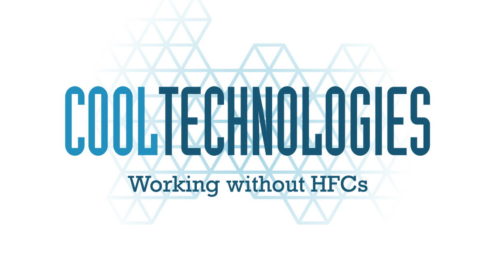New family of synthetic refrigerant gases poses potential dangers to human health and the environment
A study from Canada’s York University has raised concerns about the damaging impacts of a new breed of gases on health and the environment.
Hydrofluoroolefins (HFOs) are being promoted as sustainable alternatives to climate-wrecking hydrofluorocarbons (HFCs), which are widely used in refrigeration and air-conditioning and are currently being phased down under the Montreal Protocol.
HFOs are the next generation of synthetic chemicals being promoted by industry for future use in cooling equipment.
But while HFOs may be less harmful to the climate, they break down in the atmosphere to create high levels of trifluoroacetic acid (TFA) – which could be very damaging to human health and the environment.
Scientists studying at Arctic ice cores have found growing accumulations of TFA and two other short-chain perfluoroalykcarboxylic acids (scPFCAs, which are fatty acids with fewer than six carbon atoms).
Levels of these chemicals have grown tenfold since 1990 (shortly after the Montreal Protocol was signed). In a follow-up article, the scientists point to refrigerants HFC-134a and HFO-1234yf as the main sources of this growing abundance of TFA.
The study concludes that levels of TFA will continue to grow as more HFOs are used globally. It warns that not enough is known about the toxicity of TFA but its persistence and increasing abundance is worrying.
A 2017 study by the Norwegian Environment Agency also highlighted the lack of understanding around TFA and its future effects on human health and the environment.
Furthermore, experts from the Montreal Protocol have warned that the high rate of TFA from a number of HFOs, especially HFO-1234yf, is a critical issue and “may be of considerable environmental relevance in view of the expected future HFO production expansion.”
EIA Climate Campaigner Sophie Geoghegan said: “More modelling and research is needed to evaluate the effect of rising TFA levels on human and planetary health.
“TFA ends up in lakes and rivers and contaminates these bodies of water, damaging aquatic flora and fauna. Previous studies have also linked TFA to acid rain and there is growing concern that TFA could also contaminate drinking water, thus impacting human health.”
A study found TFA in the blood of people in China, indicating widespread exposure to the toxin. TFA is toxic and is not filtered out by current technology.
Concerns over TFA will likely only increase as HFOs are more widely adopted around the world. HFO-1234yf creates far more TFA than the HFC refrigerant it replaces, HFC-134a.
Since 2017, almost all new cars in the USA and the EU have replaced HFC-134a with HFO-1234yf in air conditioning. HFO-1234yf is also mixed with HFCs and other HFOs to create a range of refrigerant blends with lower global warming potential which are being promoted for use in commercial, industrial and transport refrigeration.
Geoghegan added: “To avoid this potentially dangerous build-up of TFA, the roll out of HFOs needs to be slowed down or the Montreal Protocol might once more have to step up to phase out the latest synthetic refrigerant.”
Fortunately, HFOs are not the only alternative to HFCs – natural refrigerants, including ammonia, carbon dioxide and hydrocarbons, are feasible and climate-neutral solutions being increasingly adopted in cooling equipment worldwide.
Find out more about the widespread use of climate-friendly natural refrigerant alternatives at our recently updated Cool Technologies website.





